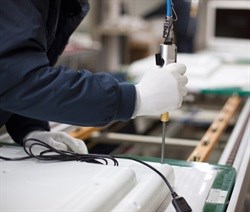Sappi and Edinburgh Napier University have developed a lower-cost, commercially viable way to make potential "wonder material" nanocellulose.

© wellphoto - Fotolia.com
The parties say nanocellulose has the potential to be used in a wide range of applications - from packaging and touchscreen displays, to car panels and wound care - with the potential demand for 35-million tonnes a year by 2020.
The JSE-listed Sappi group will build a pilot plant to produce Cellulose NanoFibrils following a three-year partnership between researchers from Sappi and the Scottish university.
The breakthrough in science complements Sappi's move into new business fields based on renewable raw materials. It has for years been converting its pulp and paper business into one that produces more chemical cellulose, used in making products including textiles, pharmaceuticals and foods.
Sappi has about a 20% share of the world market for chemical cellulose, also known as dissolving wood pulp, made at its Ngodwana and Cloquet mills in SA and the US. It ships the cotton substitute to clothing and textiles makers in East Asia at far higher margins than its paper products.
Andrea Rossi, Sappi group head of technology, said Tuesday, 9 December, a pilot production plant was being planned for "the end of 2015".
Kagiso Asset Management head of research Abdul Davids said: "This is clearly quite positive for Sappi and is a potentially valuable revenue stream.
"But Sappi would still have to deal with declining demand for their (coated fine printing and writing paper) products and substantial debt burden."
The nanocellulose project co-ordinator, Math Jennekens, who is research and development director at Sappi Europe, said the product, extracted from wood fibres, had unique optical, barrier and strength properties. "Unlike other lightweight, high-strength materials based on fossil fuels, it is completely sustainable, making it very desirable as a new material for industrial and transport applications," he said.
Sappi says it will be able to produce it on a commercially viable basis, without producing large volumes of chemical waste water associated with existing techniques.
The material has previously been produced by intensively processing wood pulp to release ultra-small nanocellulose fibres, each so small that 2,000 could fit in the width of a single human hair.
The Edinburgh research team says it has been able to reduce the amount of energy needed to power the process, as well as the need for expensive chemicals.
Source: Business Day




























